- Treatments
- Venus Versa Treatments
- Skin Resurfacing
Skin Resurfacing
Skin resurfacing treatments are designed to target the skin’s texture and effectively reduce signs of skin damage and improve the appearance of unevenness.
Over time, or as a result of injury, the skin’s texture can naturally become uneven, either as a result of wrinkles, enlarged pores, scarring, stretch marks or pigmentation – we might commonly think of freckles or age spots as a sign of the latter.
This is something that happens to us all at some point - although there may be genetic factors that mean a person retains more youthful or elastic skin than others (even within their own families); and there are also lifestyle factors, such as smoking, drinking alcohol, or exposure to ultraviolet (UV) light that can accelerate the signs of ageing. Additionally, injury to the skin can cause scarring; while weight gain and then loss might cause stretch marks.
Skin resurfacing treatments are designed to target the skin’s texture and effectively reduce signs of skin damage and improve the appearance of unevenness. At Derma, we are able to safely and effectively treat patients using the gold standard of skin resurfacing devices – the Venus Versa.
While skin resurfacing treatments are not essential for every person, for many, they can be life-changing, especially in helping to boost confidence and helping patients to better match how they feel on the inside with their outward appearance.
In some cases, uneven texture from wrinkles or sun damage can make a person appear older or more tired than they feel on the inside; or there may be other factors that negatively affect them – for example, they might often be asked why they are always looking tired; or feel as though their complexion is dull. There are also individuals who might feel passed over in business settings, as they compete for jobs with younger colleagues; or as though the appearance of facial ageing limits their options socially. For some people, especially if they have lost a great deal of weight or have undergone treatment for acne and are left with stretch marks or scars, it can feel demoralising to be left with the reminders – this is where skin resurfacing can make a significant difference both in the way an individual feels and how they look.
While skin resurfacing can have a significant positive impact on a person’s self-confidence, it is not suitable for everyone. This is why before undergoing any treatment, it is essential to first have a free consultation with the dermatology specialist nurse, whose expertise in the medical treatment of the skin can best determine whether it will be suitable and effective, and who can identify how many sessions you will likely need in order to attain the desired outcome.
At Derma, we offer dermatologist-led care, and our patients are only ever treated by the most qualified practitioners in a sterile clinical setting.
What is the Benefit of Skin Resurfacing?
Skin resurfacing can help to improve self-confidence, while restoring a smoother, more rejuvenated appearance of even texture to the skin.
Skin resurfacing can help to improve self-confidence, while restoring a smoother, more rejuvenated appearance of even texture to the skin.
In contrast to cosmetic creams and beauty treatments that usually focus on either hydrating or camouflaging the superficial layers of the skin to make issues appear less prominent for a few hours or days; skin resurfacing directly targets the uneven texture, and is far more effective at resolving it long-term.
At Derma we offer the following skin resurfacing treatments:
SkinCeuticals peels work by exfoliating the skins surface to reduce the appearance of uneven skin texture, pigmentation, fine lines, and dullness. This solution works by reacting with the upper layer of the skin to efficiently dissolve the bonds that bind surface cells to the skin, ultimately revealing smoother, healthier skin underneath.
During the treatment, you may experience some tingling on the skin, however this will subside once the treatment has finished. After the peel you may experience some redness, which will be similar to a mild sunburn, but with stronger, more penetrative peels you may experience some swelling and blistering. The goal is to create a controlled, safe injury to the skin, thereby prompting skin to naturally repair itself and reveal newer, brighter skin.
Who are peels suitable for?
SkinCeuticals peels are ideal with people wishing to treat their skin texture and pigmentation concerns, however some patients may not be medically suitable. The depth and type of chemical peel used by a skincare professional depends on the condition of the skin, the skin’s Fitzpatrick type (skin colour and likelihood to burn), and the skincare habits of the client. In general, the higher the Fitzpatrick skin type, the more caution should be exercised to avoid triggering a pigment response. For extremely sensitive skin and skin experiencing barrier dysfunction (eczema, psoriasis, etc), chemical peels are generally not recommended.
The Venus Versa skin resurfacing treatment is powered by advanced radio frequency technology to safely correct signs of skin damage, which improves the appearance of scars, visible pores, deep wrinkles, stretch marks, and uneven skin texture. The Venus Versa delivers energy through the skins surface, which stimulates fibroblasts and rebuilds collagen. The results are reduced skin damage with low downtime. The unique pin pattern delivers targeted energy to deeper skin layers by creating very small, micro-dermal wounds. The surrounding healthy tissue helps to heal these micro-wounds, which improves skin texture. It is safe on patients of all skin tones, which sets it apart from almost every other medical device in the market, and is a safer alternative to the CO2 laser.
Skin resurfacing treatments can be performed by an expert practitioner on multiple areas of the body, so patients can be reassured that no matter where the problem is, they don’t have to feel embarrassed, and there is a good chance that it can be treated.
Treatments have minimal downtime and can often be performed in as little as 20 minutes, depending on the area being treated. An appointment can often be carried out during a lunch break, or an afternoon off.
While multiple sessions are typically needed to obtain the final results, and the number of sessions depend on the individual patient - once they are achieved, the effects of skin resurfacing treatment are lasting, so long as patients follow the aftercare instructions, and do not carry on with lifestyle habits that will counteract the effects of the treatment (for example, UV exposure will continue to accelerate facial ageing even after treatment).
In the longer term, if it is desired, skin resurfacing treatment can also be combined with other treatments, such as anti-wrinkle injections or dermal fillers, however they cannot be performed at the same time; and any aesthetic treatment must have appropriately settled before skin resurfacing would be suitable. You can discuss this confidentially in consultation so that you can plan ahead.
Who is Skin Resurfacing Suitable For?
Patients wishing to minimise the appearance of wrinkles or ageing skin; acne scars; stretch marks; or enlarged pores would be potential candidates to undergo skin resurfacing, however not all patients are medically suitable for treatment, or they may have to wait before they can safely undergo the procedure.
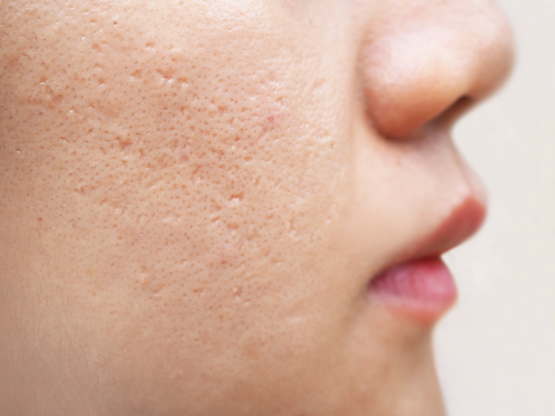
Those who might not be suitable for treatment include people;
What is the Process of Skin Resurfacing?
Prior to undergoing skin resurfacing, you’ll need to prepare, and if you are taking certain medications, or have underlying medical conditions, you will be advised of any special considerations prior to your appointment.
You must avoid taking over-the-counter anti-inflammatory tablets (such as ibuprofen or paracetamol) for at least one week before treatment with skin resurfacing. It’s also best to avoid drinking alcohol for 24-48 hours beforehand since it might cause complications due to increased blood flow to the skin. Additionally, any makeup will need to be removed from the areas to be treated, and you shouldn’t use makeup or any other creams directly after having skin resurfacing, so you may want to keep that in mind when planning your day.
To determine whether you are a suitable candidate for treatment, you will first undergo a consultation with the specialist dermatology nurse, who will take your medical history and examine the area to be treated. They will also explain all of the potential side-effects, to enable you to decide whether skin resurfacing is the right treatment option for you, and you can take time to consider this – you don’t have to decide on the spot. If it is suitable to proceed, you will need a spot test to test the suitability of your skin. This is then assessed at between 24 hours and 5 days depending on your skin type. When you return to have the site assessed, if it is safe to do so, then the treatment can be carried out.
The area to be treated will need to be clean, so you cannot use any creams or lotions beforehand, and you’ll need to remove any jewellery from or near the area. If you have a lot of hair in the area that’s being treated, you might be asked to shave it ahead of your appointment, so that the treatment will work effectively.
You will be asked to lie down comfortably on a couch, and the expertly trained practitioner will pass the device over the area to be treated. Skin resurfacing with the Venus Versa may feel like tiny pins on the surface of the skin, followed by an electrical zap, but they are not usually considered painful, and they don’t normally require any anaesthetic beforehand.
You will be given follow-up care instructions on what to expect and what to avoid after your treatment, and it is important to follow these instructions to the letter.
Usually, you can leave the clinic straight away after, unless you are experiencing dizziness, in which case you may remain in the waiting room until you are feeling better. You may also need to wait a while if you have been given any medication.
The results of skin resurfacing treatment usually requires 3 sessions (for rejuvenation, but 6 for scarring), typically spaced 4 weeks apart, and the effects can be subtle initially, but patients undergoing subsequent sessions are likely to see the results more quickly.
What are the Risks and Complications of Skin Resurfacing?
If the patient meets all criteria to have the treatment, it is quite safe and effective, in the properly trained hands, but it is possible to have complications, and in most cases, they would be minor – such as;
Your skin might feel quite hot and tight after treatment, which is a similar sensation to a sunburn. You cannot use any lotions on the skin, so if you are particularly sensitive to that sensation, you might want to use a fan to blow cool air onto the skin in the 24 hours following your session.
If you have underlying medical conditions or are regularly taking medications, it is essential that you let your specialist dermatology nurse know when they take your medical history during the consultation.
Some people can experience dizziness after treatment, and it may be beneficial to rest in the waiting room or have a cup of tea following your treatment until this regulates. If it is your first time undergoing treatment, and you are prone to dizziness, it might be a good idea to have someone pick you up from your appointment, although most people who undergo treatment feel safe to drive afterwards.
What is the Recovery Time and Outcome for Skin Resurfacing?
If you are suitable for skin resurfacing, and it is the right option for you, the procedure usually takes about 20-30 minutes, and any redness usually disappears within 2-4 hours, unless your skin treatment has required a more aggressive course of treatment, in which case redness could last up to 5 days. After the treatment, you must not use any products on your skin for 24 hours.
During this time, you will want to ensure you are following the appropriate follow-up care instructions. While you’ll need to be staying well away from UV exposure (for 1 month after the treatment), once you have been told it is appropriate to use a lotion on the skin, make sure you are using an SPF of at least factor 30 in the area that’s been treated.
You should also avoid hot baths and rigorous exercise for at least 48 hours after treatment, and the clinic will let you know if you might have to wait longer. You will not be able to do hot yoga or use a sauna.
The full effects of the treatment are visible after multiple sessions, and if you are having skin resurfacing for anti-ageing, you will eventually need to undergo further treatment to maintain the effects, since environmental factors will eventually cause the skin to age again in later years.
Whatever your needs, you can rest assured that Derma will provide the very best care for your skin, with access to the latest research and treatments.
Before and After
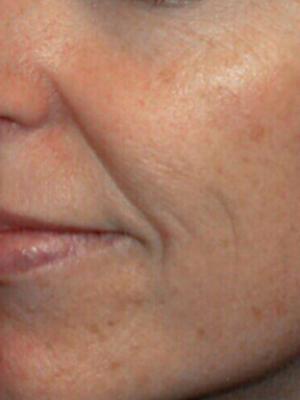
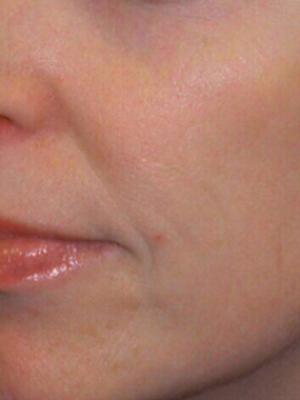
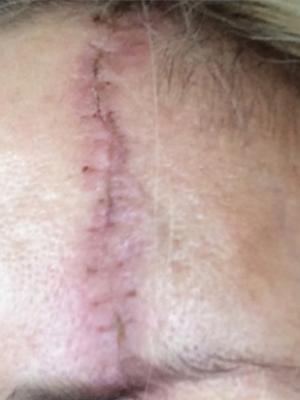
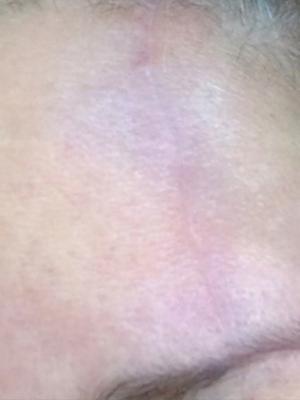
Send an Enquiry